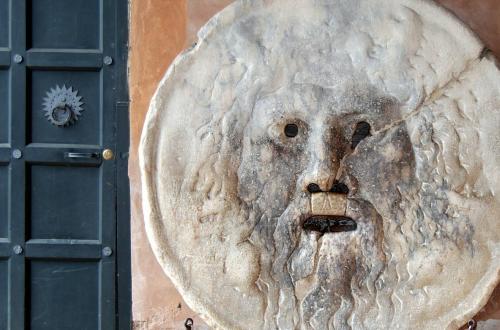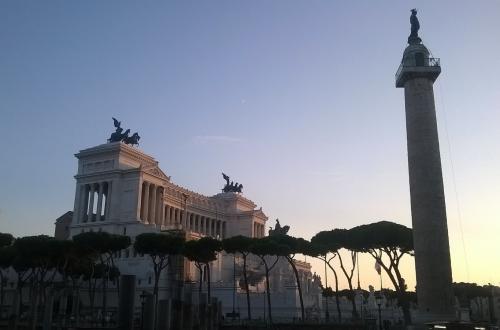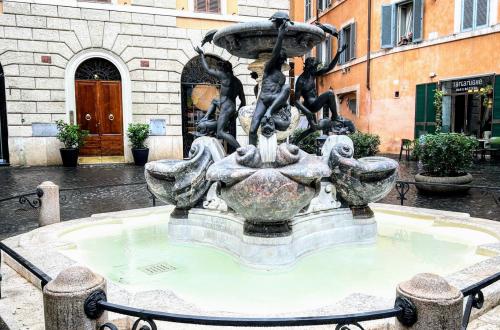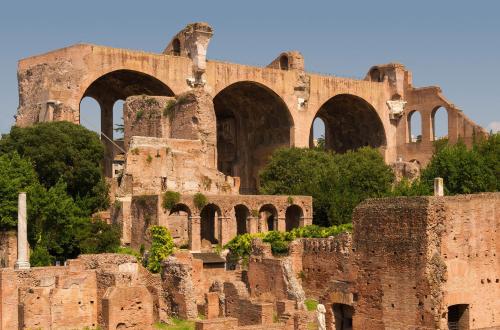L’Amphithéâtre Flavio (Colisée)

 Condividi
Condividi
Ponte del Risorgimento is a bridge connecting Piazzale delle Belle Arti with Piazza Monte Grappa in Rome's Flaminio and Della Vittoria districts.
Ponte della Magliana (223,62 mt long and 19,25 mt wide) connects the Portuense Quarter with the Via del Mare and the EUR Quarters.
A cycle-pedestrian structure on the Tiber river, located between Ponte dell'Industria and Ponte Marconi.
The bridge links the districts Regola and Trastevere and is named after Garibaldi. It was built in 1888 in memory of the history of Garibaldi’s wars and victories in the two worlds.
The construction of the bridge, dedicated to the scientist Guglielmo Marconi, began in 1937, the same year of his death. Due to the Second World War, work was suspended and resumed in 1953.
The bridge was destroyed and rebuilt several times during the centuries and was destroyed by Totila in 544 AD.
The Testaccio bridge connects the Testaccio riverfront to the Portuense district with a single reinforced concrete arch.
It was built in 1960 to a design by Vito Camiz, on the occasion of the 17th Olympic Games, to connect Via Olimpica with the Acqua Acetosa sports facilities; it is a road bridge over the Tiber River
[...]Porta Latina dal nome della via che l’attraversava era ad un solo arco con ai lati due torri semicircolari in laterizio.
The gate stands on what was once the southern boundary of the “Leonine City”, that is, the area enclosed by the walls built by Pope Leo IV as a defence against the Saracens who had sacked Rome in 8
[...]Closely connected to the new river port built at the end of the 3rd century BC south of the Aventino, the Porticus Aemilia was a vast complex of warehouses located in the area behind the Emporium,
[...]An interesting mix of industrial archaeology and popular tradition is the main feature of Ostiense, one of the capital's youngest and liveliest areas.
The San Lorenzo district takes its name from the nearby Basilica of San Lorenzo fuori le mura.
The San Lorenzo district takes its name from the nearby Basilica of San Lorenzo fuori le mura.
From October 2017 the church of Santa Marta al Collegio Romano, entrusted to the Central Institute for Restoration, will host Restauro Aperto.
Address: Via degli Stabilimenti, 5 - 00019 Tivoli (RM)
The shrine is situated on the Janiculum, near Villa Sciarra. It was discovered in 1906 and excavated in 1908.
The famous Tomb of the Veienti is located along the road that led from the Cassia to Veio, at the height of Nero's Tomb.
To the left of Via della Caffarella, in a narrow street descending towards an ancient mill around, you can see the Roman monument also known as the temple of the god Redicolo.
The sepulchre, casually discovered in 1938, lies under Palazzo della Cancelleria; at the moment is almost completely submerged by the waters of Euripus, the channel that crossed Campus Martius and
[...]The travertine and tuff monument, of which only part of the façade survives, is on the left of the Vittoriano, and was spared from demolition during the construction of the building.
At the beginning of 2000, the Sedes Sapientiae Institute (International Ecclesiastical College) moved into the eighteenth-century Conservatory of San Pasquale Baylon, located in the Trastevere dist
[...]Le quattro statue definite “parlanti” dalla tradizione popolare romana, sono quelle dette del Pasquino, dell’Abate Luigi, di Madama Lucrezia e di
[...]The temple, dedicated to the deified emperor Claude, had been build by his wife Agrippina after his death in 54 AD.
Built around 315 AD, used to occupy a vast area of the Quirinale, within the actual Via XXIV Maggio, Piazza del Quirinale, Via Nazionale and Via della Consulta.

These are the biggest thermal baths in Rome, built between 298 and 306 AD.

 Condividi
Condividi

 Condividi
Condividi

 Condividi
Condividi

 Condividi
Condividi

 Condividi
Condividi

 Condividi
Condividi